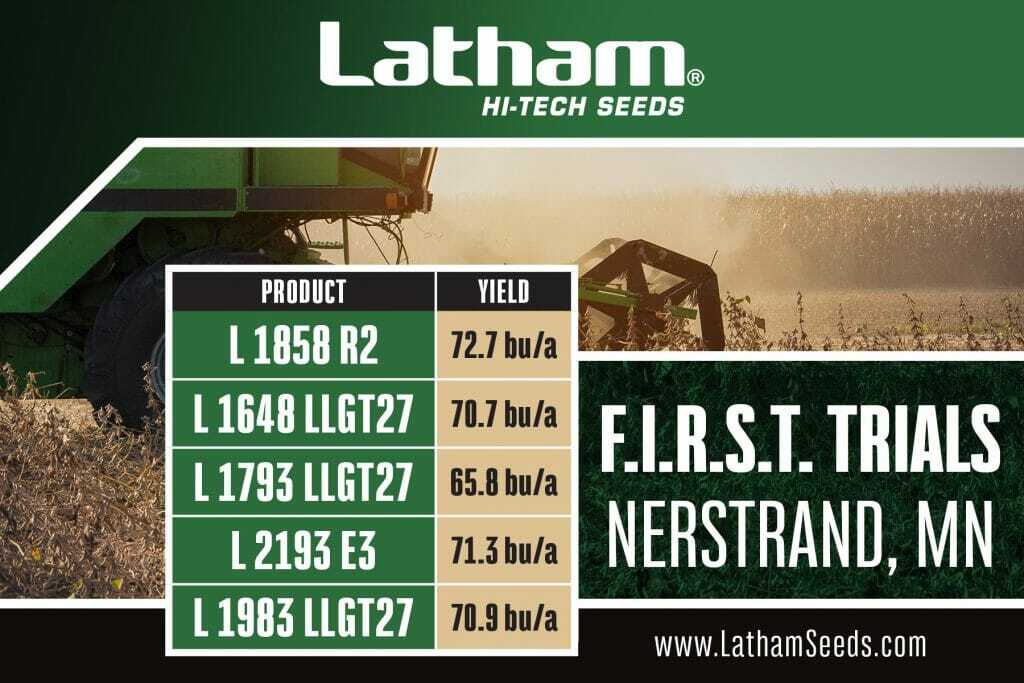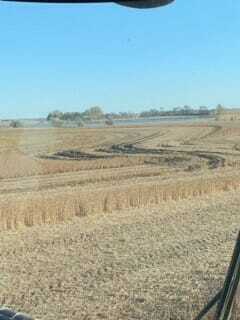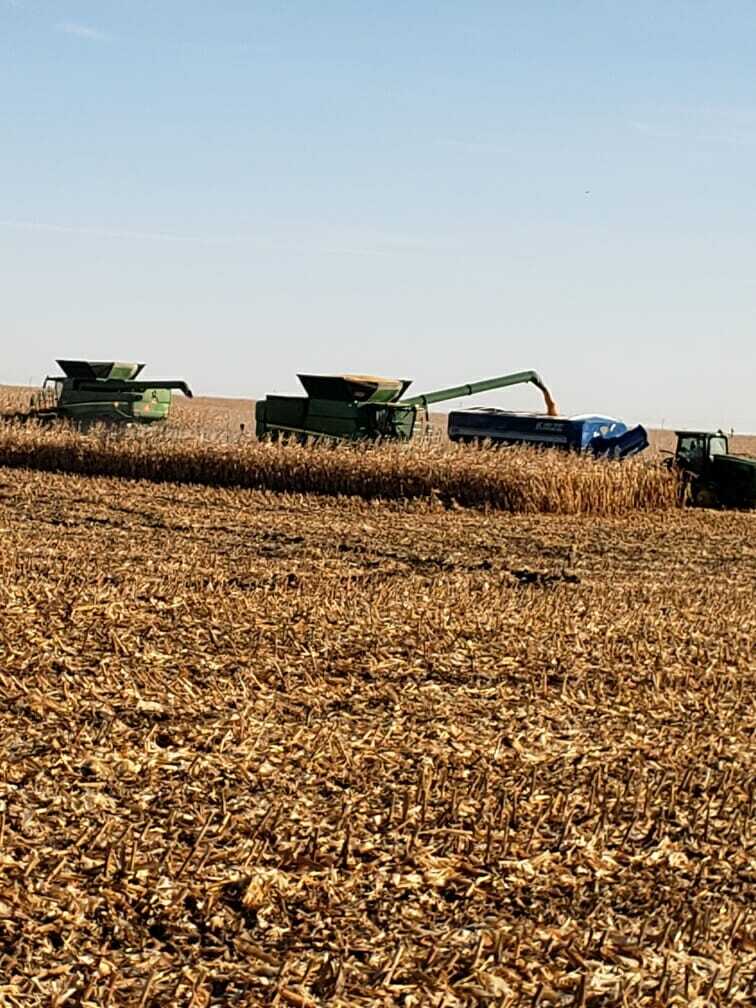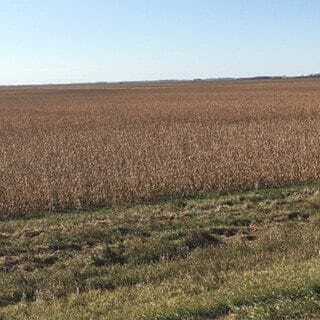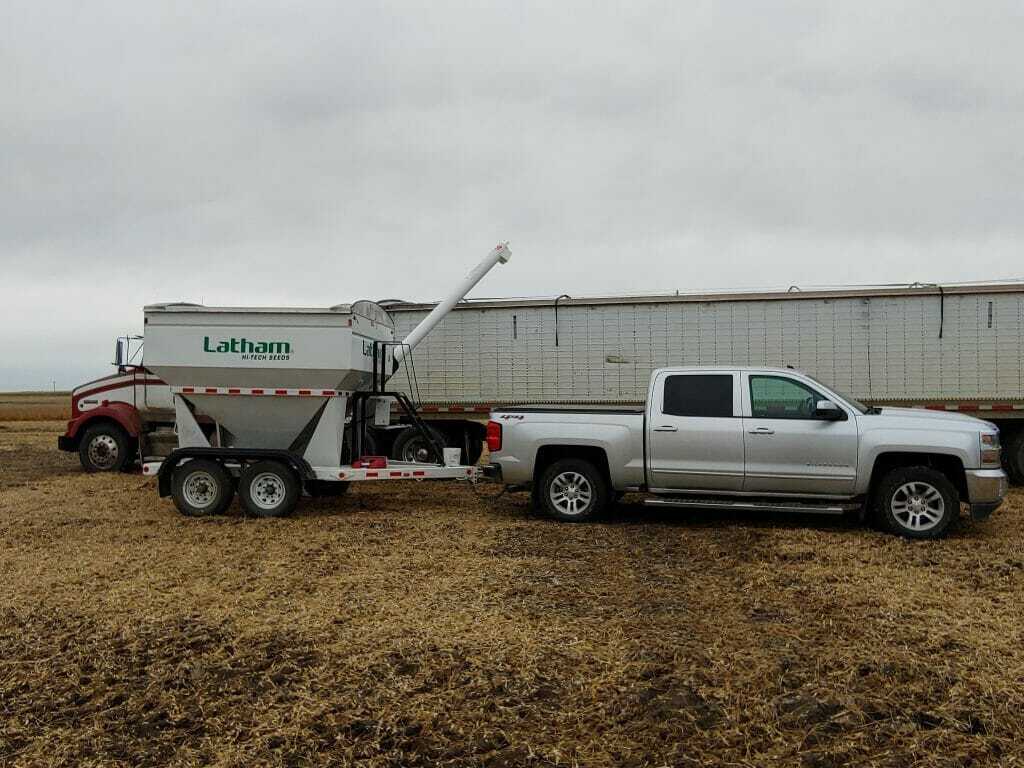Harvest results slow down as we enter the winter season. The result we are highlight today is our LH 5965 VT2 PRO RIB hybrid. This number won the Overall First Place spot in the Iowa East Central region.
-
Latham Hi‑Tech Seeds
Latham Seeds Yield Highlights

-
Latham Hi‑Tech Seeds
Latham Seeds Yield Highlights

-
Latham Hi‑Tech Seeds
Latham Seeds Yield Highlights

Quality is key and it is proven in our 2020 harvest results. View top yield F.I.R.S.T. Trial results below!
South Dakota
Minnesota
Wisconsin
Iowa
Illinois
-
Latham Hi‑Tech Seeds
Latham Seeds Yield Highlights

Quality is key and it is proven in our 2020 harvest results. View top yield F.I.R.S.T. Trial results below!
South Dakota
Minnesota
Wisconsin
Iowa
Illinois
-
Latham Hi‑Tech Seeds
October 30, 2019 Crop Reports

Southeast North Dakota
Gary Geske
Much cooler temps this week is allowing the flex head to slide over the ice. so the combine head is not scooping up water anymore. Many soybean acres were harvested this week, so corn harvest will soon begin.
Northeast South Dakota
James Keltgen
Cooler weather this past week has brought soil temperatures below freezing. The ground has firmed up, allowing farmers to worry less about getting stuck. Soybean harvest has progressed. Earlier soybean moistures were ranging between 16 and 17 percent. Now moisture is down around 13 percent. Yields are still variable as excess moisture was the theme all summer long.
Some corn has been combined. Moistures are still 20 to 28 percent, depending on maturity and planting date.

Doug Abeln Seed Co. harvested a soybean plot. Yields ranged from 55 to 65 bushels.
Southeast South Dakota
Ramie Coughlin
Harvest is officially here. With a much needed dry stretch, many farmers were able to finally harvest. Soybeans have been coming out at much higher yields than anticipated. I’m hearing many yield reports around 40 to 55 bushels per acre, but even 70-bushel beans have been reported. Good harvest weather is forecast for the next week, so it’s full speed ahead here in South Dakota.
Northern Minnesota
Ken Highness
Harvest is like nothing we’ve ever seen before in this region. Area farmers are fighting mud at every turn. Farm equipment has been stuck right up to the axle. We’re harvesting through standing water and combine headers are filling with mud. The picture taken from the cab provides s bird’s eye view of what 90% of the fields look like in my region. The second picture is creativity at it best. This grower near Grand Forks, ND is mounting tractor lug tires on the drive axle of his semi. This is working very well because the lugs don’t hold mud like conventional tires plus they very well on the highway.
Southern Minnesota
Justin Prokosch
Last week started slow as we experienced ample amounts of rain. After a couple days of letting things dry off, farmers were able to back in the fields. Most soybeans have been taken out, and corn has been going at a good clip. We took out our last Latham® soybean plot for this region late the night, so I was able to capture a nice sunset.

Northern Wisconsin
Joe Salter
These photos were taken as we harvested a Latham® SuperStrip plot in southern Wisconsin. We are still recovering from all the rain that has fallen the past few weeks. Many farmers were able to run this week. Soybean harvest has been very slow, but we’re finally making progress. Grain corn is still very wet, so the corn driers will be running non-stop this season.
North Central Iowa
Cory Greiman
The weather once again has caused a delay in the harvest progress. Snow fall totals this week ranged from little to none in the western two-thirds of my territory to two inches in the eastern third of my territory. Hopefully, this snow will melt quickly. Many farmers are hoping to get in the field again today.
Northeast Iowa
Craig Haaland
This Latham® plot in Black Hawk County (Iowa) averaged 239 bushels per acre (bu/A). LH 5847 VT2 PRO RIB went 253 bu/A. Latham’s 5377 VT2 PRO RIB topped the plot at 247.7 bu/A.
Soybean harvest is about 85% done. It’s been tough to get the moisture below 14 percent. Many farmers started taking out corn last weekend. Moisture is running from 19 to 25%. Hopefully, the dry weather holds so we can make good progress this week.
West North Central Iowa
Bart Peterson
Much cooler temps this week is allowing the flex head to slide over the ice. so the combine head is not scooping up water anymore. Many soybean acres were harvested this week, so corn harvest will soon begin.
Eastern Iowa
Jerry Broders
Harvest had been fast and furious. Then Monday evening we picked up three to four inches of snow, bringing harvest to a halt. The forecast calls for another four to eight inches of snow tonight into Thursday, so this could keep us out of the field until next week.
Western Iowa
Larry Krapfl
Area farmers are working extremely late hours this fall to get the 2019 crop harvested.
East Central Iowa
Harvest made significant progress last week on both corn and soybeans. Some growers were able to wrap up soybean harvest before the snow fell on Monday night. Pictured here is LH 5245 VT2 PRO RIB, dried down and ready to harvest! Yields have been extremely variable, but this hybrid has been a consistent top-yielding hybrid in Latham’s lineup. It has already won seven different F.I.R.S.T. trials this year!
 West Central Iowa
West Central Iowa Eric Croghan
Even though weak shanks are a characteristic of some corn hybrids, many environmental factors can lead to ears dropping. Heat, drought, nutrient deficiencies, disease and insects all can cause ears to drop. That’s why it’s a good idea to walk corn fields and make notes throughout the growing season. For example, corn borers can cause ears to drop off conventional hybrids. Perhaps you really need a corn borer-resistant hybrid. Work with your local Latham® rep to choose hybrids with good ear retention and tolerance to Diplodia ear and stalk rot.
-
Latham Hi‑Tech Seeds
Tar Spot

What is Tar Spot?
 Tar Spot is a corn fungal disease that has been infiltrating the Midwest within the last few years. Tar spot has the capability to severely impact yields up to 30%. Concern about the intensity of this fungus grows as researchers learn more about it. We urge farmers to scout their fields through harvest for tar spot since this fungus can survive over winter year to year.
Tar Spot is a corn fungal disease that has been infiltrating the Midwest within the last few years. Tar spot has the capability to severely impact yields up to 30%. Concern about the intensity of this fungus grows as researchers learn more about it. We urge farmers to scout their fields through harvest for tar spot since this fungus can survive over winter year to year.Tar Spot Identification
Tar spot will show up as small, raised blacks spots, on the upper and lower corn leaves. The raised black spots are also known as stromata. If severe enough, it can spread to leaf sheaths and husks. Typically, it will start lower in the canopy and move upward. Tar spots are usually accompanied with a yellow halo or fish-eye effect around the black spots. Note the stromata, cannot be rubbed off unlike a common or southern rust pustule.
The Importance of Scouting
This corn fungus has nearly made it across Iowa and is continuing to spread in Wisconsin, Illinois, Indiana and Missouri. Tar Spot likes cool temperatures and humid conditions, with prolonged leaf wetness or heavy dew and will concentrate towards the middle of the field. It can cause lodging and hasten maturity.
Final Thoughts
This is one of the variables in farming we continue to learn about. Scout now and start planning for next season. Product selection is key when fighting these variables year to year and important to integrate into your plan for the next growing season.

“Threats of Tar Spot Complex disease of maize in the United States of America and its global consequences” (Mottaleb et al. 2018). -
Latham Hi‑Tech Seeds
#AskTheAgronomist: Scout for Tar Spot this Fall
 Could Tar Spot be the next Gray Leaf Spot? Tune in for our #AskTheAgronmist discussion!!0:25 Crop report update1:21 Tar spot topic introduction2:10 Identification of tar spot3:25 Favorable tar spot conditions5:05 Where to find tar spot in your fields6:25 The spread of tar spot9:35 How does tar spot survive through winter10:45 Take home points on tar spot
Could Tar Spot be the next Gray Leaf Spot? Tune in for our #AskTheAgronmist discussion!!0:25 Crop report update1:21 Tar spot topic introduction2:10 Identification of tar spot3:25 Favorable tar spot conditions5:05 Where to find tar spot in your fields6:25 The spread of tar spot9:35 How does tar spot survive through winter10:45 Take home points on tar spot -
Latham Hi‑Tech Seeds
October 23, 2019 Crop Reports

Northwest North Dakota
Brian McNamee
On October 10, we received 20 to 26 inches of snow from Jamestown to Devils Lake, or approximately 100 miles north to south. The good news that after a nice warm week, all the snow is melted. He bad news is that all that runoff has filled an already saturated river basin. I haven’t seen flooding like this since the spring of 2009.
Southeast North Dakota
Gary Geske
Now that the sun is shining again and a stiff breeze is blowing, corn harvest is once again underway. The weather forecast looks favorable for several days.
Northeast South Dakota
James Keltgen
There were four days last week where farmers were able to harvest. Conditions weren’t ideal, but more rain was in the forecast. Yields are ranging from 30 to 60 bushels an acre with moisture ranging from 14 to 18 percent. Lower yields came from fields that were lower and wetter. Corn moisture is still ranging from 24 to 30 percent.
Southeast South Dakota
Ramie Coughlin
More rainfall has slowed harvest, but farmers across Southeast South Dakota are doing what they can. Some are finishing silage; some are combining wet corn, while many others are working on soybeans.
Northern Minnesota
Ken Highness
Slowly, but surely, farmers have found their way back into fields. Some farmers in my region have a great crop in some fields, but extremely wet conditions are preventing them from getting to it. After all the snow and rain we’ve received this fall, some fields may not get harvested this year. We need extended dry, windy weather before winter sets in. In this picture, we’re harvesting a Latham® plot near Barney, ND.
Southern Minnesota
Justin Prokosch
We had a few really nice days last week, so farmers got a significant amount of crop harvested. This photo was taken over the weekend as these young farmers helped with yield calibrations.
One inch and a half to two inches of rain fell across many parts of Minnesota early this week, bring harvest to a stop for a few more days.
Northern Wisconsin
Joe Salter
Soybeans have been coming off slowly as frequent rains continue to delay harvest. We harvested a Latham® SuperStrip plot in the southern regions of Wisconsin. Early results L 2295 R2X and L 2193 E3 are doing very well!
North Central Iowa
Cory Greiman
The weather has once again put a stop to harvest. Another one to 2.5 inches of rain fell over the weekend and into Monday.
Northeast Iowa
Craig Haaland
This Clayton County farmer planted Latham® 5249 SS RIB. It went 233 bushels per acre, and moisture was around that 25 percent. A lot of soybeans were harvested last week before the rain fell on Saturday. Many farmers finished soybeans while a few hours still need a good day or two before they will finish. Very little corn has come out so far. Another inch of rain fell here Monday, so we’re hoping to get back in the fields this weekend.
Northwest Iowa
Jeremy Joynt
Much of Northwest Iowa received an unwelcomed amount of rainfall, which has slowed down harvest. Plot results continue to come in, so keep an eye out to see how well Latham® is doing again this season!
West North Central Iowa
Bart Peterson
Eastern Iowa
Jerry Broders
Harvest kicked into high gear this past week.
Western Iowa
Larry Krapfl
Many combines have been sitting idle since Saturday night. We were hoping for drying conditions, but this week’s wind was more than we bargained for. Soybean harvest is 80% done, so many farmers will finish soybeans this week.
Strong winds have blown for the past three days, breaking almost all the tops out of the corn. It’s very easy to determine which way the wind came out off.
East Central Iowa
Aaron Steenhoek
Harvest across Central Iowa came to a grinding halt last week after an inch or more of rain fell. Full-season soybeans that were planted in June were tough to harvest in places yet last week, but they should be ready to combine once we the fields dry out. Corn is finally below 20 percent moisture with some fields testing as low as 16 percent. Pictured here is a girthy ear of LH 6187 DG PRO RIB. This field is still standing strong after the high winds that have blown during the past couple of days.
West Central Iowa
Eric Croghan
Strong winds the past couple days have allowed us to gain a better understanding about the importance of late-season plant health. It’s important to keep plants healthy and well feed to avoid the spread of diseases and stalk cannibalization.
-
Latham Hi‑Tech Seeds
Test for Soybean Cyst Nematode

One comment I often hear from farmers is “I just can’t seem to get an increase in soybean yields as I do for my corn yields.” This is the perfect time of year to reflect on the growing season while analyzing yield results. It’s also the best time to sample for soybean cyst nematodes.
What is SCN?
Soybean cyst nematode is a microscopic ground worm. When analyzing soybean roots, it’s important to correctly identify the difference between nitrogen-fixing nodules and cysts. Nodules for nitrogen production are larger and the size of a pea. Cysts are microscopic and smaller than a grain of sand.
One of the biggest challenges when identifying SCN is that it is not accompanied with many symptoms, but can cause up to a 30% yield loss. Usually SCN shows up in hot spots, where you can see severe stunting, yellowing, shorter crop, lack of canopy or early maturity. These symptoms tend to show up on lighter soil or during tough growing seasons. Wherever soybeans are grown, typically SCN is an issue. Below are two maps to show the growth of SCN over the years.
What is the life cycle of SCN?
Essentially the cyst is the life cycle of a nematode. Juvenile nematodes come in and infect the root. Typically, just the females feed on the root which takes away nutrients from the plants results in a loss of yield. They will then mate and produce eggs. When they produce eggs, they expand in the root, erupt and spread 20 to 500 eggs throughout the soil. The cysts then harden on the root and the process begins again.
In Iowa, we can see that happen for at least three generations per season. Each cyst can have between 20 and 500 eggs inside, creating opportunity for juveniles to come back and begin feeding on the soybean root.
Once the eggs get in the soil, it’s important to understand the number that you have in the soil. Those eggs can stay dormant year-over-year in the soil. Since these eggs are so small, they require very little oxygen to survive.
Management of SCN
The most important management practice of SCN is IPM – Integrated Pest Management. In the Midwest, having a corn and soybean rotation is a great start. Corn is not a host crop whereas soybeans are. I also suggest soil sampling this fall to identify the egg population in your soil. Pull a core from about 8 inches down, right next to the soybean plant right in the root zone.
I also advise to stay away from sampling in the middle of a hot spot for SCN. Often the eggs are concentrated along the edge of the hot spot, so sampling that area will give most accurate results. Population thresholds vary by state. I suggest looking closely to your management practices if results are anywhere from 2,000 – 5,000 eggs per sample. Once you know what is in your field, you can begin to manage it.
Here are three ways to help manage this pest:
- Plant Latham® brand resistant soybeans. Reference product characteristics on our website to identify the disease rating
- Use Latham SoyShield Plus® with Saltro® seed treatment. This will fight SCN and Sudden Death Sydrome.
- TALC USA. Protect corn and soybeans against parasitic nematodes.
Feel free to call into the Latham Seeds office or email me at phill@lathamseeds.com with any questions.
























